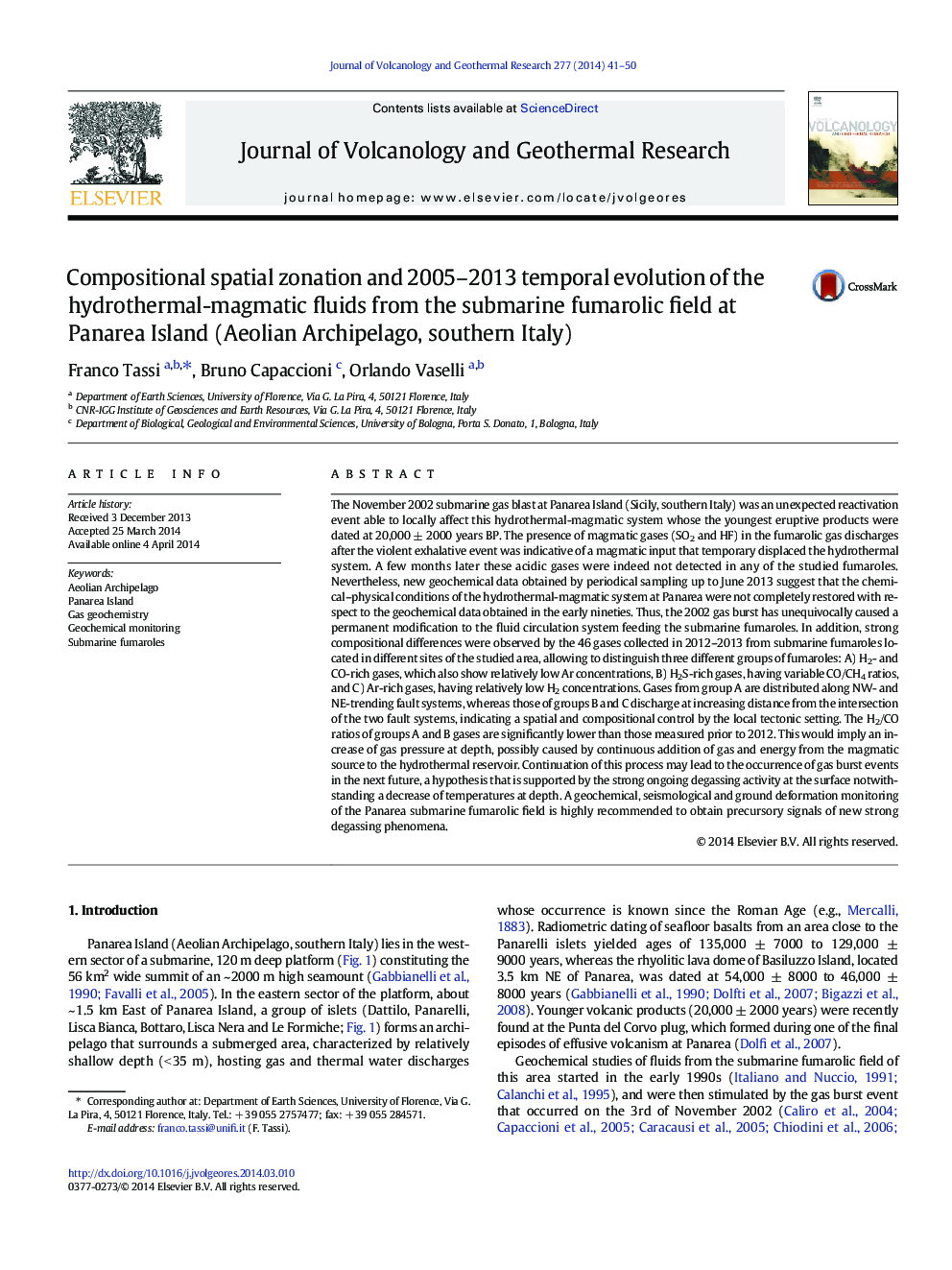| کد مقاله | کد نشریه | سال انتشار | مقاله انگلیسی | نسخه تمام متن |
|---|---|---|---|---|
| 4712394 | 1638344 | 2014 | 10 صفحه PDF | دانلود رایگان |

• Gas geochemistry of a submarine fumarolic field at Panarea Island is investigated.
• The spatial distribution of the submarine fumaroles is tectonically controlled.
• Secondary processes affect gas chemistry at the periphery of the fumarolic field.
• Gas pressure at depth has increased in the last ten years.
• Geochemical monitoring of fluids can provide precursory signal gas eruptions.
The November 2002 submarine gas blast at Panarea Island (Sicily, southern Italy) was an unexpected reactivation event able to locally affect this hydrothermal-magmatic system whose the youngest eruptive products were dated at 20,000 ± 2000 years BP. The presence of magmatic gases (SO2 and HF) in the fumarolic gas discharges after the violent exhalative event was indicative of a magmatic input that temporary displaced the hydrothermal system. A few months later these acidic gases were indeed not detected in any of the studied fumaroles. Nevertheless, new geochemical data obtained by periodical sampling up to June 2013 suggest that the chemical–physical conditions of the hydrothermal-magmatic system at Panarea were not completely restored with respect to the geochemical data obtained in the early nineties. Thus, the 2002 gas burst has unequivocally caused a permanent modification to the fluid circulation system feeding the submarine fumaroles. In addition, strong compositional differences were observed by the 46 gases collected in 2012–2013 from submarine fumaroles located in different sites of the studied area, allowing to distinguish three different groups of fumaroles: A) H2- and CO-rich gases, which also show relatively low Ar concentrations, B) H2S-rich gases, having variable CO/CH4 ratios, and C) Ar-rich gases, having relatively low H2 concentrations. Gases from group A are distributed along NW- and NE-trending fault systems, whereas those of groups B and C discharge at increasing distance from the intersection of the two fault systems, indicating a spatial and compositional control by the local tectonic setting. The H2/CO ratios of groups A and B gases are significantly lower than those measured prior to 2012. This would imply an increase of gas pressure at depth, possibly caused by continuous addition of gas and energy from the magmatic source to the hydrothermal reservoir. Continuation of this process may lead to the occurrence of gas burst events in the next future, a hypothesis that is supported by the strong ongoing degassing activity at the surface notwithstanding a decrease of temperatures at depth. A geochemical, seismological and ground deformation monitoring of the Panarea submarine fumarolic field is highly recommended to obtain precursory signals of new strong degassing phenomena.
Journal: Journal of Volcanology and Geothermal Research - Volume 277, 1 May 2014, Pages 41–50